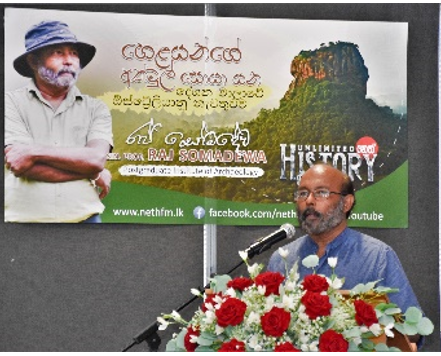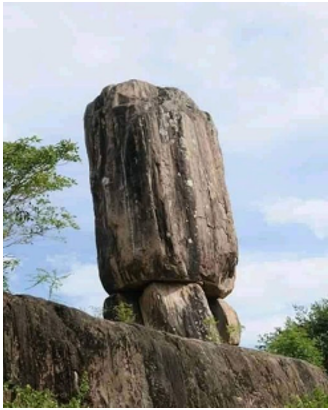Prof. Raj Somadeva Presents History of Sri Lanka – By Wimal Kannangara
Professor Raj Somadeva, well known Archaeologist from Sri Lanka, provided a glimpse of the history of Sri Lanka at the Sri Lanka Buddhist Monastery, 114, Considine Road, Ellen Grove on 11 and 12 March to a widely appreciative audience.
 The presentation on Saturday 11 March was on the undocumented history (pre-history) of Sri Lanka. Tracing the history from the first homo sapiens and Balangoda Man who is known to have existed 30,000 years ago to the civilisation that existed around 5400 years ago, the audience was left spellbound with the presentation of evidence found after excavation in areas such as Kaltota, Haldummulla and Opanayaka.
The presentation on Saturday 11 March was on the undocumented history (pre-history) of Sri Lanka. Tracing the history from the first homo sapiens and Balangoda Man who is known to have existed 30,000 years ago to the civilisation that existed around 5400 years ago, the audience was left spellbound with the presentation of evidence found after excavation in areas such as Kaltota, Haldummulla and Opanayaka.
The evidence presented included the evolution of those beings from inefficient hunter gatherers to people who consumed harvested flora material. This transition provided leisure time for the people as collection of flora material for food did not consume as much time as hunting. This leisure made them creators of artefacts that were of high standard. For example, heart shaped pendants that were found in excavations were made of quartz with uniform shape and a hole in it indicating that they had the sophisticated tools stronger than quartz.
The presentation also included artefacts such as bird images on rocks in Wellawaya, burial sites in Meemure, earthenware with zero porosity in Wellawaya and many more produced more than 1000 years BC.
 On Sunday, the presentation delved further into our history. A “sel lipi” with Brahmi script was found in a cave situated in Tamketiya where the donor describes himself as a Yaksa. The Nagas were depicted with the snake ho od behind them to show that they belonged to the Naga clan.
On Sunday, the presentation delved further into our history. A “sel lipi” with Brahmi script was found in a cave situated in Tamketiya where the donor describes himself as a Yaksa. The Nagas were depicted with the snake ho od behind them to show that they belonged to the Naga clan.
Artifacts found in Ibbankatuwa include a beautiful necklace of beads where some of the beads were imported from India. These date back to the first millennium BC (1000-300 BC), which shows that we were trading internationally at this period.
A megalithic structure which was used as a lighting conductor to save the farmers in the valley below from being struck by lightning. There was also evidence that as far back as 3000 years ago, the ladies used makeup.
What was evident from the lectures was that the people of Sri Lanka discovered advanced methods using natural resources and built structures and were involved with trading with other nations. They were also great craftspeople.
Professor Raj Somadeva is a Senior Professor in Archaeology at the Postgraduate Institute of Archaeology, University of Kelaniya in Sri Lanka, and a Senior Fellow of the Sri Lanka Council of Archaeologists.
Professor Somadeva’s main field of study is ancient urbanisation in Sri Lanka. He spent six years from 1999 to 2005 in the south and south-eastern part of Sri Lanka to understand the historical development of urbanism in that area which has been described in the national historical chronicles and the lithic inscriptions. During that period he undertook several macro-scale reconnaissance surveys and nine archaeological excavations in the Lower Kirindi Oya basin. The results of the fieldwork were presented to his doctoral degree at Uppsala University as his thesis, The Origins of Urbanism in Southern Sri Lanka.
Wimal Kannangara







